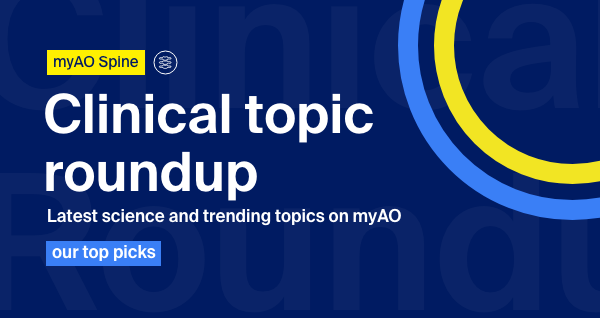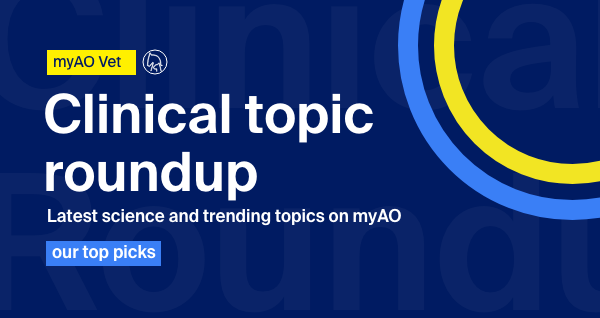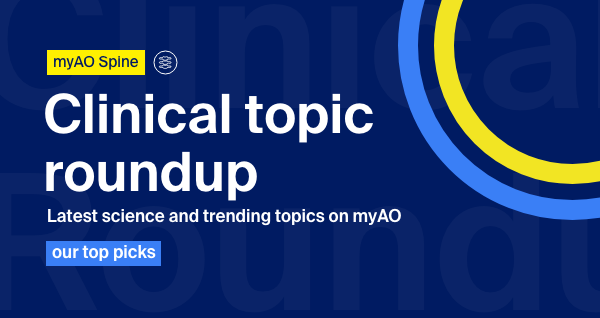Clinical Topic Roundup
|
November 2021
The Global Spine Congress (GSC), AO Spine's annual meeting, is the leading world class spine congress gathering thousands of spine surgeons worldwide. Among other relevant topics, the GSC 21 program includes three events on MISS, Minimally Invasive Spine Surgery, the highlight topic of this month's knowledge update from myAO.March 2023
Bone deformity in animals can be caused by a range of factors, including injury and developmental abnormalities. Corrective treatments can include surgical procedures such as osteotomy or the use of corrective braces and splints. myAO is offering you the following exclusive selection of "knowledge gems" around deformities correction.March 2023
A coordinated multidisciplinary approach is used to treat spinal tumors. The expertise of a neuroradiologist, pathologist, angiographer, oncologist, and spinal surgeon may be combined during the patient's treatment. The type of tumor, neurologic deficit, spinal deformity (e.g. scoliosis), bony involvement, prior treatment, patient's medical status, pain, and life expectancy are considered prior to treatment.











